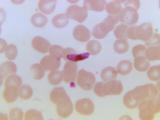Aug 4, 2011
US West Nile cases, neuroinvasive disease up sharply in 2010
Forty US states and the District of Columbia (DC) reported 1,021 cases of West Nile virus (WNV) infection in 2010, according to a report today from the Centers for Disease Control and Prevention (CDC) on arbovirus diseases. Of those cases, 629 (62%) were classified as neuroinvasive, for an incidence of 0.2 per 100,000 population, according to the report in Morbidity and Mortality Weekly Report (MMWR). That rate reflects an increase of more than 50% from 2009, when the incidence of neuroinvasive WNV was 0.13 per 100,000 population, based on 386 cases from 38 states and DC. The CDC reported 720 total WNV cases in 2009, as reported last July in MMWR. States with the highest incidence of neuroinvasive WNV were Arizona (1.6), New Mexico (1.0), Nebraska (0.6), and Colorado (0.5). The incidence of WNV neuroinvasive disease increased with age, with the highest incidence in those 70 or older. After WNV, the next most commonly reported cause of neuroinvasive arboviral disease was California serogroup viruses, followed by eastern equine encephalitis virus, St. Louis encephalitis virus, and Powassan virus. "Health-care providers should consider arboviral infections in the differential diagnosis of cases of aseptic meningitis and encephalitis, obtain appropriate specimens for laboratory testing, and promptly report cases to state health departments," the report states.
Aug 5 MMWR report
Jul 2, 2010, MMWR WNV update
New Ehrlichia species reported in Minnesota, Wisconsin
A new species of Ehrlichia has caused ehrlichiosis in at least four adults in Minnesota and Wisconsin, according to researchers from those two states and the CDC reporting in the New England Journal of Medicine today. The researchers also found the new species in 17 of 697 deer ticks and surmise that the four were likely infected via tick bites, the typical transmission route of the disease. From Jun 1 through Dec 31, 2009, the team tested 4,247 blood specimens from 45 states by polymerase chain reaction (PCR) assay. Of the 1,518 specimens from Wisconsin and Minnesota residents, 163 (10.7%) were positive for Anaplasma phagocytophilum, which is closely related to the ehrlichiae and causes a condition in humans called granulocytic anaplasmosis. None of these specimens were positive for Ehrlichia chaffeensis or E ewingii, the typical agents of ehrlichiosis. However, specimens from three Wisconsinites and one Minnesotan had positive PCR tests with a melting temperature that was outside the melting temperature range for E chaffeensis, E ewingii, and A phagocytophilum. All four patients reported fever, fatigue, and headache, and one had nausea and vomiting. All reported exposure to tick habitat. The authors conclude, "We have characterized a newly discovered ehrlichia species with supportive clinical, epidemiologic, culture, DNA-sequence, and vector data" and dubbed the new species "Ehrlichia species Wisconsin." The group reported some of these findings at meetings beginning in 2009.
Aug 4 N Engl J Med abstract
USDA awards big grant for research on noroviruses in food
The US Department of Agriculture (USDA) is awarding $25 million to North Carolina State University to study how noroviruses are transmitted and survive in food, with the aim of controlling them better, Agriculture Secretary Tom Vilsack announced yesterday. He made the announcement in a speech prepared for delivery at the conference of the International Association for Food Protection in Milwaukee. Vilsack said the research would be led by Lee-Ann Jaykus, president of the association. In other comments, Vilsack said he has ordered the USDA's Food Safety and Inspection Service (FSIS) to develop a new policy on tracing the source of E coli O157:H7 in beef. "I've directed FSIS to develop a new policy that looks at how we can change our actions after we find a product that tests positive for O157," he stated. "In 90 days, I expect the agency to announce the first step in transforming our traceback policy. I've also instructed FSIS to complete a pilot study on new technologies and sampling methods that help us test ground beef and trim more quickly and efficiently."
Text of Aug 3 Vilsack speech
Study: 2009 H1N1 and seasonal H3N2 cause similar impact on kids
Pandemic 2009 H1N1 and seasonal H3N2 influenza cause similar symptom severity and risk of serious outcomes in children, and both strains have a higher clinical and socioeconomic impact on that population than does seasonal H1N1 flu, Italian researchers said in a study published yesterday in the Journal of Infection. They analyzed data from 389 children with 2009 H1N1, 126 with seasonal H1N1, and 486 with seasonal H3N2 flu who were otherwise healthy but were referred to an emergency department or hospitalized for their illness. They found that both 2009 H1N1 and H3N2 were significantly associated (P < 0.001) with lower respiratory tract infection upon presentation, the need for hospitalization, 7 or more days of hospital stay, school absences of 7 or more days, the need for aerosol therapy, household flu-like illness, and household medical visits and antibiotic prescriptions. Also, longer hospitalizations and school absences seemed to be associated with 2009 H1N1 illness (P < 0.01). The authors conclude that the similar clinical and socioeconomic impact of 2009 H1N1 and seasonal H3N2 held regardless of the patients' age or gender.
Aug 3 J Infect abstract
Kenyan study shows text messages improve malaria management
Sending Kenyan healthcare workers text-message reminders boosted their adherence to malaria management guidelines by 24 percentage points, and this improvement was still evident 6 months later, according to a study published in The Lancet today. From Mar 6, 2009 to May 31, 2010, an international team of researchers conducted a cluster-randomized controlled trial that included 107 rural health centers in 11 districts in coastal and western Kenya. They randomly assigned workers to receive text messages or not, then noted whether they adhered to management with artemether-lumefantrine, including treatment, dispensing, and counseling tasks as specified in Kenyan national guidelines. A total of 119 workers received the intervention, and the researchers assessed 2,269 children who received treatment (1,157 intervention, 1,112 control). Health workers who received text messages improved correct artemether-lumefantrine management by 23.7 percentage-points (95% confidence interval [CI] 7.6-40.0; P = 0.004) immediately after intervention and by 24.5 percentage-points (8.1-41.0; P = 0.003) 6 months later. In an accompanying Lancet commentary today, Bruno Moonen and Justin Cohen from the Clinical Health Access Initiative in Nairobi wrote, "The low cost of mobile phone reminders needed to achieve this gain suggests that it could provide an evidence-based solution to complement the gains that can be achieved through more traditional interventions."
Aug 4 Lancet abstract
Accompanying Lancet commentary




















